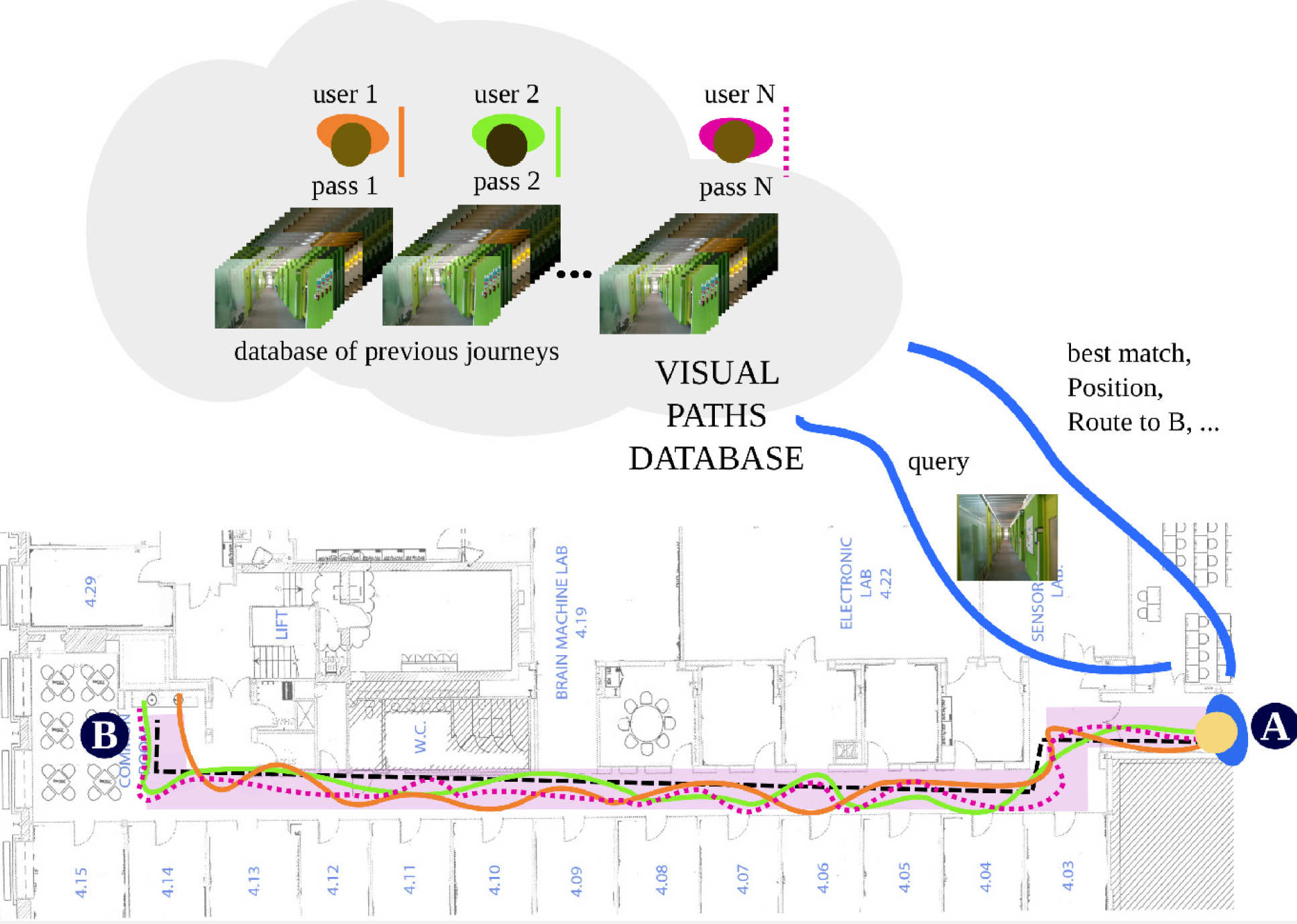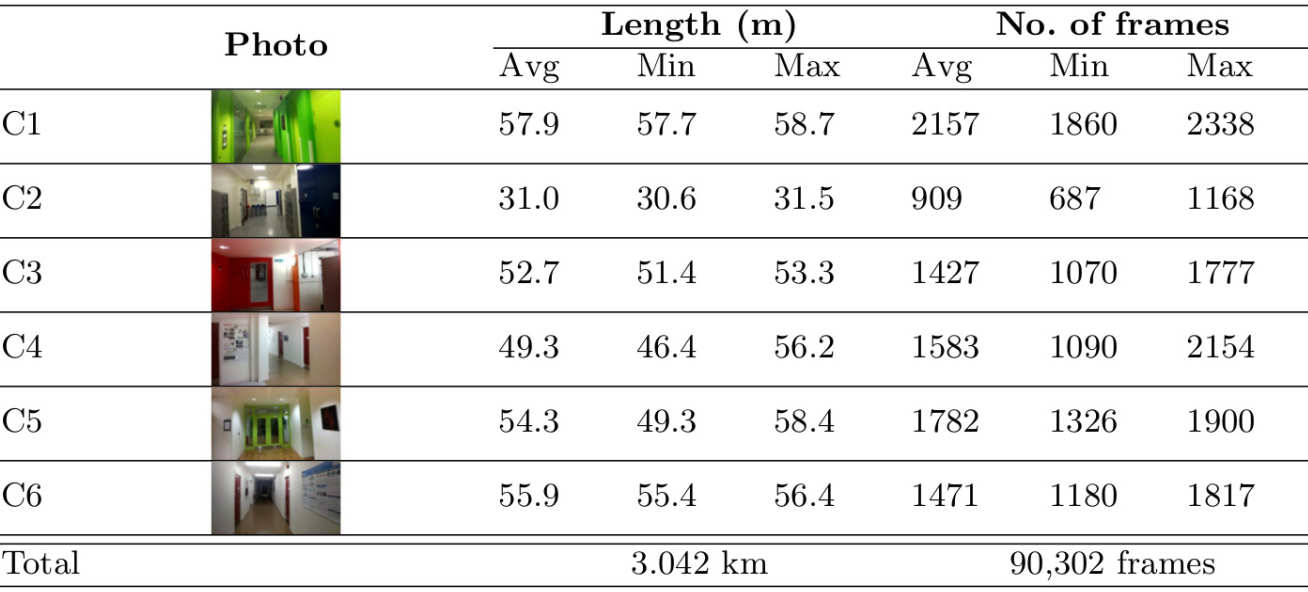Visual Paths - Navigation
Visual paths
We define a “visual path” as the video sequence captured by a moving person in executing a journey along a particular physical path.

RSM dataset details
- 60 videos
- 6 corridors
- 3.05 km
- 10 total passes/corridor
- 5 passes/corridor with Nexus 4 @1920 x 1080, 1280 x 720, 24-30 fps
- 5 passes/corridor with Google Glass @ 1280 x 720, 30 fps
- 90, 302 frames with positional ground-truth

Table 1 summarizes the acquisition. As can be seen, the length of the sequences varies within some corridors, due to a combination of different walking speeds and/or different frame rates. Lighting also varied, due to a combination of daylight/night-time acquisitions, and occasional prominent windows that represent strong lighting sources in certain parts of some corridors. Differences were also observable in some videos from one pass to another, due to the presence of activities (such as cleaning, shifting of furniture) and the occasional appearance of people.
Synthetic RSM dataset details
Synthetic corridor generated using the Unity engine.
- 7 passes
Browse and download
Code
The localisation from visual paths code is on Bitbucket: https://bitbucket.org/josemrivera/localisation-from-visual-paths
If you use our code, please cite our respective publications (see below)
Publications
- J. Rivera-Rubio, I. Alexiou, and A. A. Bharath, “Appearance-based indoor localization: a comparison of patch descriptor performance,” Pattern recognition letters, vol. 66, pp. 109-117, 2015. doi:10.1016/j.patrec.2015.03.003
[Download PDF] - J. Rivera-Rubio, I. Alexiou, L. Dickens, R. Secoli, E. Lupu, and A. A. Bharath, “Associating locations from wearable cameras,” in Proceedings of the british machine vision conference, 2014, p. 13 pages.
[Download PDF]
Acknowledgements
The dataset hosting is supported by the EPSRC V&L Net Pump-Priming Grant 2013-1 awarded to Dr Riccardo Secoli, Jose Rivera-Rubio and Anil A. Bharath.


